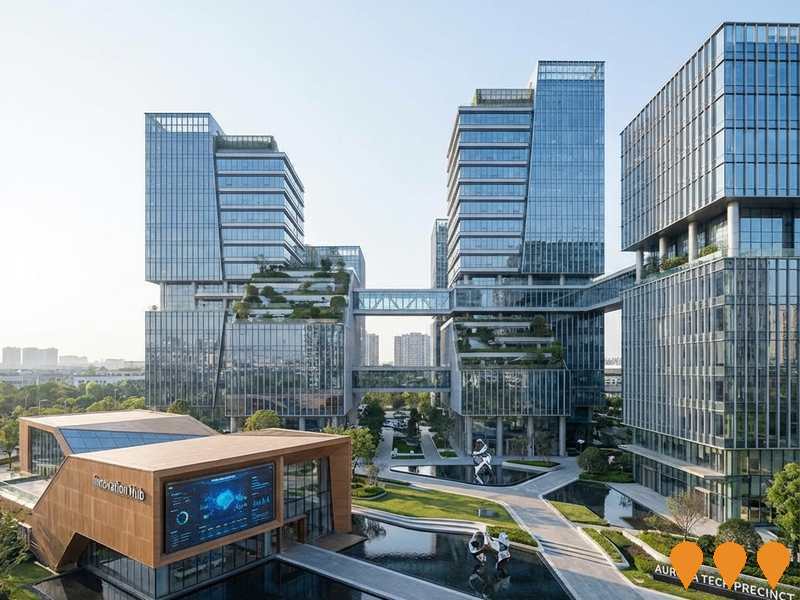Chart Color Schemes
est. as @ -- *
ABS ERP | -- people | --
2021 Census | -- people
Sales Activity
Curious about local property values? Filter the chart to assess the volume and appreciation (including resales) trends and regional comparisons, or scroll to the map below view this information at an individual property level.
Find a Recent Sale
Sales Detail
Population
Oatley - Hurstville Grove is positioned among the lower quartile of areas assessed nationally for population growth based on AreaSearch's assessment of recent, and medium term trends
AreaSearch's analysis indicates that Oatley - Hurstville Grove's population is approximately 12,837 as of August 2025. This figure represents an increase of 243 people, a 1.9% rise from the 2021 Census which recorded a population of 12,594. The change is inferred from the estimated resident population of 12,839 in June 2024 and an additional 95 validated new addresses since the Census date. This results in a population density ratio of 2,951 persons per square kilometer, placing it in the upper quartile relative to national locations assessed by AreaSearch. Overseas migration contributed approximately 93.8% of overall population gains during recent periods, driving primary growth for the area.
AreaSearch is adopting ABS/Geoscience Australia projections for each SA2 area, released in 2024 with a base year of 2022. For areas not covered by this data, AreaSearch utilises NSW State Government's SA2 level projections, released in 2022 with a base year of 2021. Growth rates by age group from these aggregations are applied to all areas for years 2032 to 2041. Based on demographic trends and latest population numbers, the area is expected to grow by 904 persons to 2041, representing a total increase of 7.1% over the 17-year period.
Frequently Asked Questions - Population
Development
Residential development activity is lower than average in Oatley - Hurstville Grove according to AreaSearch's national comparison of local real estate markets
Oatley-Hurstville Grove has recorded approximately 53 residential property approvals per year over the past five financial years, totalling 268 homes. As of FY-26, nine approvals have been recorded. The area's population has declined in recent years, suggesting that new supply has kept pace with demand, offering buyers good choice. Developers are targeting the premium market segment, with new homes valued at an average of $718,000.
In FY-26, $8.8 million in commercial approvals have been registered, indicating the area's primarily residential nature. Compared to Greater Sydney, Oatley-Hurstville Grove has recorded 10.0% higher construction activity per person over the five-year period, balancing buyer choice and supporting current property values. New building activity comprises 38.0% standalone homes and 62.0% townhouses or apartments, promoting affordable entry points for downsizers, investors, and first-home buyers. This represents a shift from the current housing mix of 75.0% houses, reflecting reduced development site availability and changing lifestyle demands. The area has approximately 295 people per dwelling approval, indicating low density.
By 2041, Oatley-Hurstville Grove is projected to grow by 906 residents. At current development rates, new housing supply should comfortably meet demand, providing favourable conditions for buyers and potentially supporting population growth beyond current projections.
Frequently Asked Questions - Development
Infrastructure
Oatley - Hurstville Grove has very high levels of nearby infrastructure activity, ranking in the top 10% nationally
Changes to local infrastructure significantly influence an area's performance. AreaSearch has identified 34 projects likely to impact the area. Key projects include Morshead Drive Boardwalk (Oatley Bay Memorial Boardwalk), Mortdale Maintenance Centre Upgrade, Enterprise Industrial Estate Mortdale, and Trinity Majors Bay. The following list details those most relevant.
Professional plan users can use the search below to filter and access additional projects.
INFRASTRUCTURE SEARCH
 Denotes AI-based impression for illustrative purposes only, not to be taken as definitive under any circumstances. Please follow links and conduct other investigations from the project's source for actual imagery. Developers and project owners wishing us to use original imagery please Contact Us and we will do so.
Denotes AI-based impression for illustrative purposes only, not to be taken as definitive under any circumstances. Please follow links and conduct other investigations from the project's source for actual imagery. Developers and project owners wishing us to use original imagery please Contact Us and we will do so.
Frequently Asked Questions - Infrastructure
Sydney Metro City and Southwest - Future Hurstville Extension
Conceptual future extension of the Sydney Metro City and Southwest M1 line from Sydenham to Hurstville on the Illawarra line. The extension was investigated in earlier network plans as part of a southern sector conversion but is not part of the funded City and Southwest project, and recent government material and reporting indicate it is not currently being progressed. If revived, the project would convert existing tracks to metro operation and deliver high frequency driverless services to Hurstville and intermediate stations, increasing rail capacity between southern Sydney and the CBD.

Mortdale Local Centre Development Control Plan
Council is preparing a Development Control Plan for Mortdale Local Centre to guide future growth while maintaining the community's preferred 'village feel'. Draft plan to be exhibited in second half of 2025. Focuses on low to medium density development with more parking, seating, and greenery.
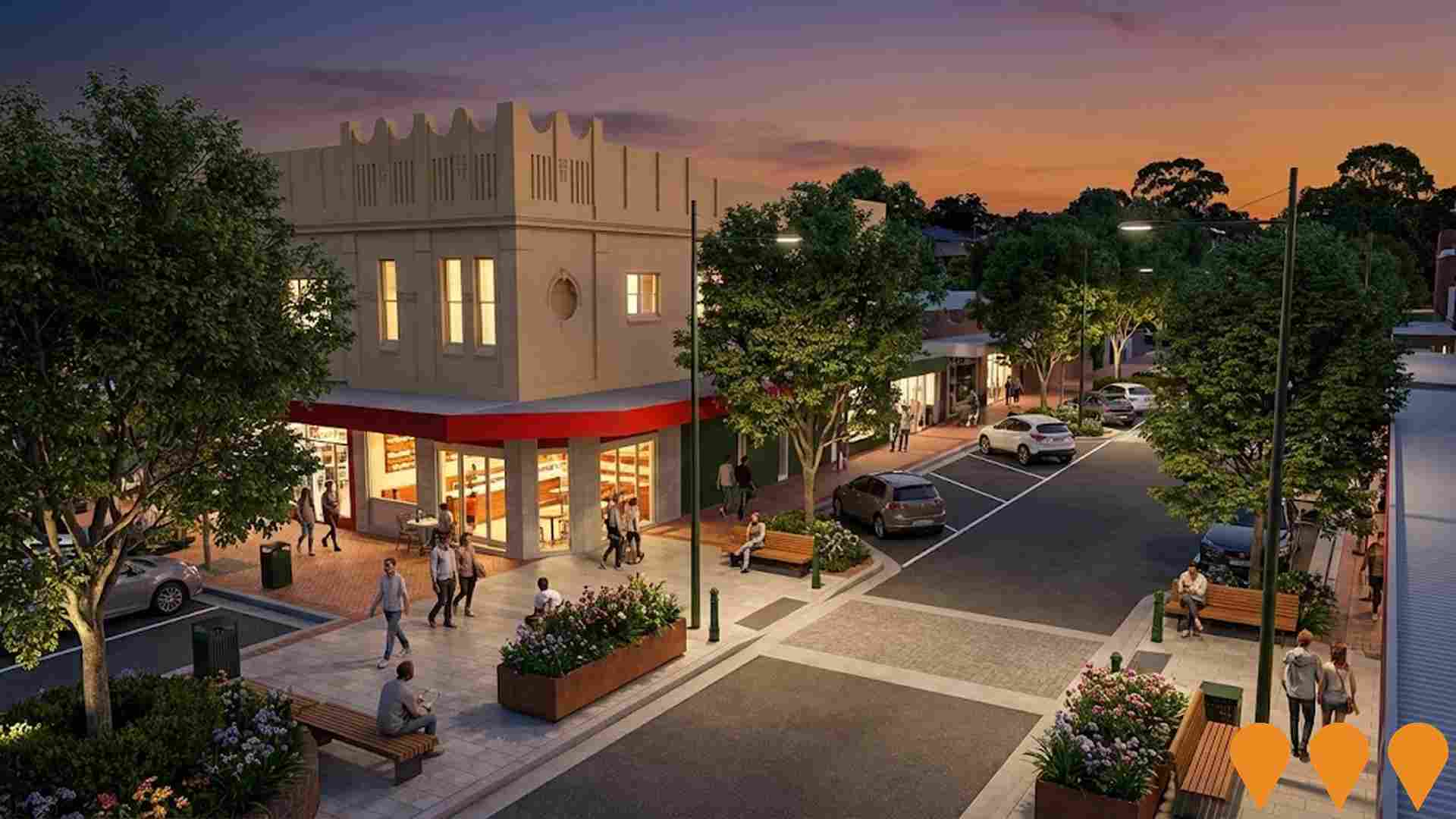
Mortdale RSL Redevelopment
State Significant Development involving demolition of the existing Mortdale RSL Club and construction of a new community club, supermarket, 175 residential units including affordable housing, and basement car parking. The mixed-use development aims to revitalize the southwestern area of Mortdale Local Centre while providing the club with sustainable long-term revenue through retail tenancies.
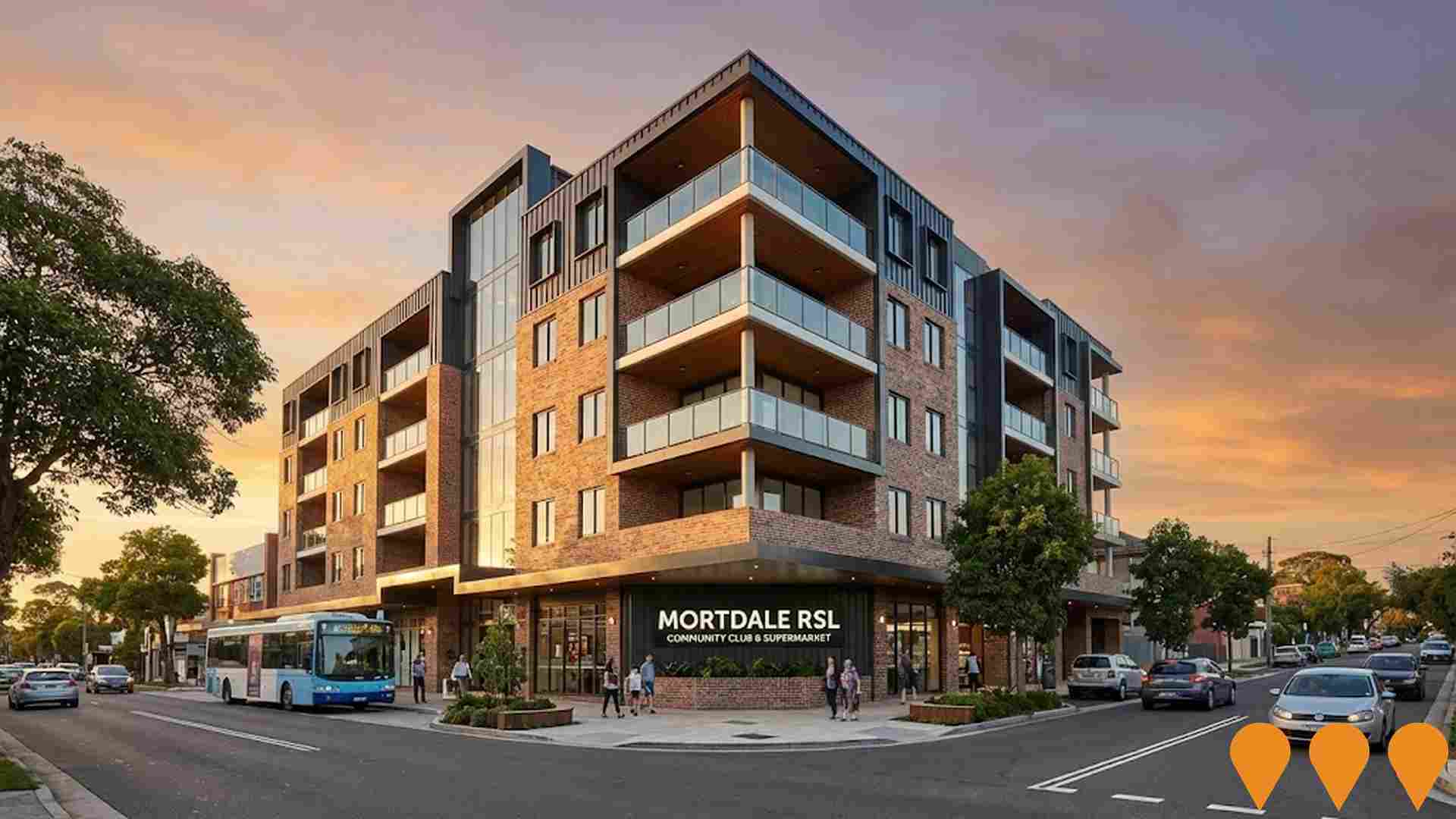
Mortdale Maintenance Centre Upgrade
Upgrade of the Mortdale Maintenance Centre as part of the More Trains, More Services program (also known as Rail Service Improvement Program). Includes construction of a new bogie exchange system to automatically remove train wheels for maintenance, extending the driveway entrance and building a new driveway exit for improved safety, installing a new electrical substation, upgrading sheds for maintenance work, track modifications, drainage upgrades, new retaining walls, electrical works and lighting. The project supports increased train services and improved rail operations. Part of a $300m contract for upgrades between Mortdale and Kiama, delivered by Laing O'Rourke and KBR. The bogie exchange system was completed in March 2023, with remaining access road upgrades off Oatley Avenue in progress as of 2025.
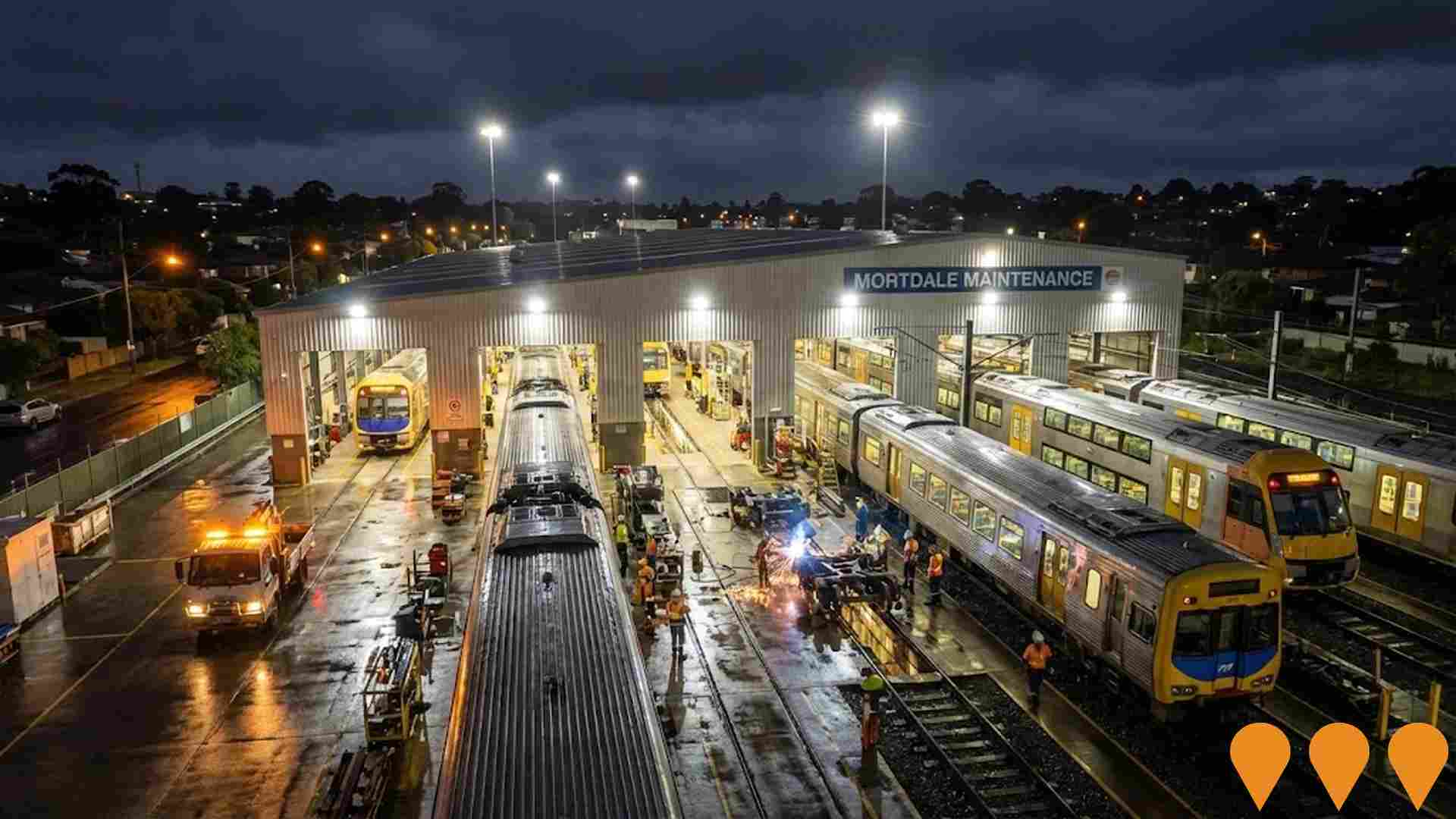
Imperial Hurstville
Mixed-use residential development at 23-32 Treacy Street by Piety THP, designed by Stanisic Architects. Features apartment tower with retail spaces at ground level, sky gardens, and innovative split-tower design contributing to Hurstville's urban renewal.

King Georges Road Upgrade
Upgrade to King Georges Road to improve safety, reduce congestion, and improve journey times, including widening to three lanes in each direction and removing four right turn movements. The project widens the 1.5km corridor between Stoney Creek Road and Forest Road, providing dedicated turn lanes and concrete median separation.
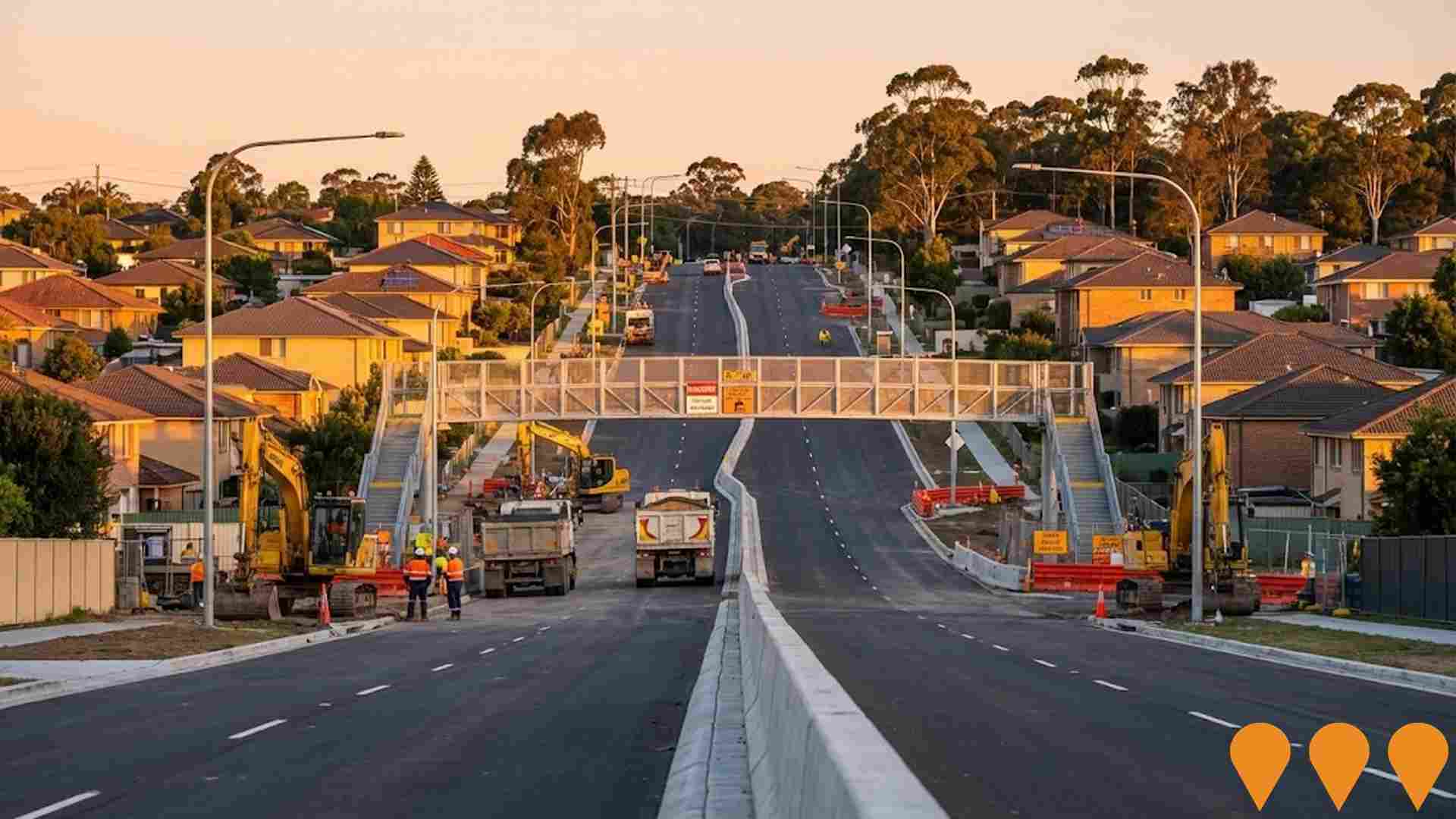
9 Gloucester Road Mixed-Use Development
Development Application approved mixed-use project comprising 349 apartments in five buildings (6-18 storeys), 4,620 sqm of retail/commercial floor space, three basement levels with 453 car spaces and 117 bicycle spaces. Site area 9,240 sqm on prominent corner of Gloucester Road and Forest Road, Hurstville. The DA-approved site remains on the market with no construction commenced as of December 2025.

Morshead Drive Boardwalk (Oatley Bay Memorial Boardwalk)
Rebuild of the 50-metre elevated wooden boardwalk connecting the east and west sections of Morshead Drive, providing pedestrian access to Moore Reserve and Oatley Boat Ramp. The boardwalk is part of a larger walking trail linking the Neverfail Bay foreshore with Poulton Park mangroves. The original structure was closed in April 2024 following a structural engineer's inspection that identified safety concerns. The new design aims to meet modern safety standards and community needs, with public consultation completed in June 2025 as part of Council's 2024/25 capital works program.

Employment
The exceptional employment performance in Oatley - Hurstville Grove places it among Australia's strongest labour markets
Oatley-Hurstville Grove has a highly educated workforce with strong representation in professional services. Its unemployment rate was 1.6% as of June 2025, lower than Greater Sydney's 4.2%.
Employment growth over the past year was estimated at 2.5%. In June 2025, 7,914 residents were employed with a participation rate matching Greater Sydney's 60.0%. Key industries for employment are health care & social assistance, professional & technical services, and education & training, with notable concentration in the latter at 1.3 times the regional average. Conversely, accommodation & food shows lower representation at 4.1% compared to the regional average of 5.8%.
Employment opportunities locally appear limited based on Census data comparison. Between June 2024 and June 2025, employment levels increased by 2.5%, labour force grew by 2.7%, leading to a slight unemployment rise of 0.1 percentage points. Greater Sydney recorded similar growth patterns with slightly higher increases in employment and labour force, and a larger unemployment rise. Jobs and Skills Australia's national employment forecasts from May 2025 project overall growth of 6.6% over five years and 13.7% over ten years. Applying these projections to Oatley-Hurstville Grove's employment mix suggests local growth of approximately 7.1% over five years and 14.3% over ten years, though these are simple extrapolations for illustrative purposes only.
Frequently Asked Questions - Employment
Income
The area exhibits notably strong income performance, ranking higher than 70% of areas assessed nationally through AreaSearch analysis
Oatley-Hurstville Grove's median income among taxpayers was $53,474 and average income was $73,360 in financial year 2022. These figures are higher than Greater Sydney's median of $56,994 and average of $80,856. Based on a 12.61% growth since FY2022, estimated incomes as of September 2025 would be approximately $60,217 (median) and $82,611 (average). According to the 2021 Census, Oatley-Hurstville Grove's household, family, and personal incomes rank between the 76th and 89th percentiles nationally. The income distribution shows that 28.9% of residents (3,709 people) fall into the $1,500-$2,999 bracket, similar to the regional level at 30.9%. Notably, 41.0% of residents earn over $3,000 per week, indicating significant affluence and supporting premium retail and service offerings. Housing accounts for 13.7% of income, with strong earnings placing residents in the 90th percentile for disposable income. The area's SEIFA income ranking places it in the 9th decile.
Frequently Asked Questions - Income
Housing
Oatley - Hurstville Grove is characterized by a predominantly suburban housing profile, with above-average rates of outright home ownership
The dwelling structure in Oatley - Hurstville Grove, as per the latest Census, consisted of 75.2% houses and 24.9% other dwellings (semi-detached, apartments, 'other' dwellings). In comparison, Sydney metro had 52.1% houses and 47.9% other dwellings. The home ownership level in Oatley - Hurstville Grove was 45.5%, with mortgaged dwellings at 33.4% and rented dwellings at 21.1%. The median monthly mortgage repayment in the area was $3,000, higher than Sydney metro's average of $2,466. The median weekly rent figure was recorded at $490, compared to Sydney metro's $440. Nationally, Oatley - Hurstville Grove's mortgage repayments were significantly higher than the Australian average of $1,863, while rents were substantially above the national figure of $375.
Frequently Asked Questions - Housing
Household Composition
Oatley - Hurstville Grove features high concentrations of family households, with a higher-than-average median household size
Family households comprise 79.9% of all households, including 44.0% couples with children, 25.6% couples without children, and 9.4% single parent families. Non-family households account for the remaining 20.1%, with lone person households at 18.0% and group households comprising 2.0%. The median household size is 2.9 people, larger than the Greater Sydney average of 2.8.
Frequently Asked Questions - Households
Local Schools & Education
The educational profile of Oatley - Hurstville Grove exceeds national averages, with above-average qualification levels and academic performance metrics
Educational attainment in Oatley-Hurstville Grove is significantly higher than broader benchmarks. As of 2021, 42.3% of residents aged 15 years and above hold university qualifications, compared to 30.4% nationally and 32.2% in NSW. Bachelor degrees are the most common at 28.2%, followed by postgraduate qualifications (11.2%) and graduate diplomas (2.9%). Vocational credentials are also prominent, with 26.6% of residents aged 15 years and above holding them, including advanced diplomas (11.2%) and certificates (15.4%).
Educational participation is high, with 29.0% of residents currently enrolled in formal education, including 9.1% in primary, 7.9% in secondary, and 7.0% pursuing tertiary education. There are six schools operating within Oatley-Hurstville Grove as of 2022, educating approximately 1,745 students. The area has above-average socio-educational conditions (ICSEA: 1065). The educational mix includes four primary, one secondary, and one K-12 school.
Frequently Asked Questions - Education
Schools Detail
Nearby Services & Amenities
Transport
Transport servicing is good compared to other areas nationally based on assessment of service frequency, route connectivity and accessibility
The analysis of public transport in the area comprising Oatley - Hurstville Grove indicates that there are currently 51 active transport stops operating. These stops offer a mix of train and bus services, with a total of 12 individual routes providing service to the area. Collectively, these routes facilitate 3,063 weekly passenger trips.
The accessibility of public transport in this region is rated as excellent, with residents typically residing only 186 meters away from their nearest transport stop. On average, there are approximately 437 trips per day across all routes, which equates to around 60 weekly trips per individual stop.
Frequently Asked Questions - Transport
Transport Stops Detail
Health
Oatley - Hurstville Grove's residents boast exceedingly positive health performance metrics with very low prevalence of common health conditions across all age groups
Health outcomes data shows excellent results across Oatley - Hurstville Grove, with very low prevalence of common health conditions across all age groups. The rate of private health cover is high at approximately 56% of the total population (~7,188 people), compared to 53.6% across Greater Sydney.
The most common medical conditions in the area are arthritis and asthma, impacting 6.4 and 5.5% of residents respectively. 75.5% of residents declare themselves completely clear of medical ailments, compared to 77.2% across Greater Sydney. As of 2021 data, 20.9% of residents are aged 65 and over (2,688 people), higher than the 19.1% in Greater Sydney. Health outcomes among seniors are particularly strong, broadly aligning with the general population's health profile.
Frequently Asked Questions - Health
Cultural Diversity
Oatley - Hurstville Grove is among the most culturally diverse areas in the country based on AreaSearch assessment of a range of language and cultural background related metrics
Oatley-Hurstville Grove has a high level of cultural diversity, with 32.8% of its population born overseas and 37.6% speaking a language other than English at home. The predominant religion in Oatley-Hurstville Grove is Christianity, accounting for 60.0% of the population, compared to 49.7% across Greater Sydney. The top three ancestry groups are English (18.0%), Australian (17.2%), and Chinese (15.5%), with Chinese being notably lower than the regional average of 23.9%.
Some ethnic groups have notable differences in representation: Croatian is overrepresented at 2.9% compared to the regional average of 1.2%, Greek is slightly higher at 5.9% versus 5.6%, and Macedonian is similar at 2.2% compared to 2.3%.
Frequently Asked Questions - Diversity
Age
Oatley - Hurstville Grove hosts an older demographic, ranking in the top quartile nationwide
The median age in Oatley-Hurstville Grove is 43 years, which is higher than Greater Sydney's average of 37 years and exceeds the national average of 38 years. The age profile shows that those aged 65-74 make up 11.2%, while those aged 25-34 comprise 9.9%. Between 2021 and present, the population aged 15-24 increased from 12.3% to 14.6%, and the 75-84 cohort grew from 6.0% to 7.1%. Conversely, the 5-14 age group decreased from 12.6% to 11.6%. By 2041, demographic projections indicate significant shifts in Oatley-Hurstville Grove's age structure. The 75-84 cohort is projected to increase by 375 people (41%), from 913 to 1,289. Notably, the combined 65+ age groups will account for 74% of total population growth. Meanwhile, the 55-64 and 0-4 cohorts are expected to experience population declines.
